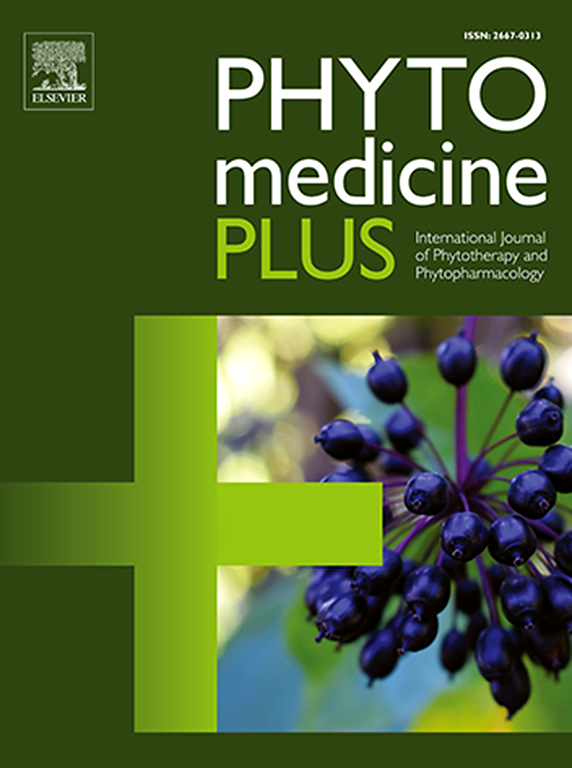Distinguishing Dioscorea and Smilax species as potential Hua-Khao-Yen using DNA barcoding coupled with high resolution melting analysis (Bar-HRM)
Q3 Pharmacology, Toxicology and Pharmaceutics
引用次数: 0
Abstract
Background
Hua-Khao-Yen (HKY) refers to a group of Thai medicinal plants valued for their pharmaceutical properties, commonly obtained from the rhizomes of five species: Dioscorea birmanica, Dioscorea membranacea, Smilax corbularia, Smilax glabra, and Premna herbacea. However, Traditional Thai HKY suggests that HKY-Nuer (red rhizome) might be S. corbularia and HKY-Tai (white rhizome) might be S. glabra, contributing to challenges in species differentiation due to morphological similarities resulting in misidentification and misuse.
Study design
This research investigated the species authentication of Thai medicinal plants, HKY-Nuer and HKY-Tai, by high resolution melting (HRM) analysis conjugated with DNA barcodes (Bar-HRM) validated by comparing melting profiles of verified specimens obtained from a herbarium with suspected specimens to aid in species identification based on the similarity of melting shapes.
Purpose
A Bar-HRM for differentiation among five possible HKY species was developed to authenticate the HKY rhizome.
Methods
Samples of five HKY species including known species from an herbarium and unknown species from local stores, were subjected to DNA extraction and amplification through real-time PCR. Primer sets were designed from chloroplast DNA, targeting the ndhF, rbcL, and trnK loci for HRM analysis. The shapes of the normalized melting curves were analyzed to distinguish the different plant species.
Results
Bar-HRM using HKYndhF(1) and HKYrbcL(1) had the highest specificity and discriminatory power, with a minimum DNA concentration requirement of 0.001 ng per reaction. Bar-HRM using both primers was applied for species authentication of HKY-Nuer and HKY-Tai from local vendors. Results revealed that the melting curves of HKY-Nuer and HKY-Tai closely resembled Smilax sp. (S. corbularia or S. glabra) and P. herbacea, respectively.
Conclusion
These findings displayed the potential of DNA barcoding coupled with HRM as an effective tool for the precise identification of Hua-Khao-Yen species.
利用DNA条形码结合高分辨率熔融分析(Bar-HRM)鉴别薯蓣和菝葜属植物的潜在花花籽
花花梗(HKY)是指一组具有药用价值的泰国药用植物,通常从五种植物的根茎中提取:山药薯蓣、膜薯蓣、金盏花、光菖蒲和金盏花。然而,传统的泰国HKY认为HKY- nuer(红色根茎)可能是S. corbularia,而HKY- tai(白色根茎)可能是S. glabra,这给物种分化带来了挑战,因为形态学上的相似性导致了误认和误用。本研究对泰国药用植物HKY-Nuer和HKY-Tai的物种鉴定进行了高分辨率熔融(HRM)分析和DNA条形码(Bar-HRM)结合,通过比较从植物标本馆获得的已验证标本和疑似标本的熔化特征,以帮助基于熔化形状相似性的物种鉴定。目的利用Bar-HRM对5种可能的黄芪根茎进行鉴别。方法采用实时荧光定量PCR技术对5种HKY标本进行DNA提取和扩增,其中包括来自某植物标本馆的已知物种和来自当地商店的未知物种。从叶绿体DNA设计引物,针对ndhF、rbcL和trnK位点进行HRM分析。分析了归一化熔化曲线的形状,以区分不同的植物种类。结果HKYndhF(1)和HKYrbcL(1)的bar - hrm具有最高的特异性和鉴别力,每次反应的最低DNA浓度要求为0.001 ng。利用这两种引物进行Bar-HRM对来自本地供应商的香港nuer和香港tai进行了物种鉴定。结果表明,香港-努尔和香港-泰的熔解曲线与菝葜(S. corbularia或S. glabra)和草本菝葜(P. herbacea)相似。结论DNA条形码技术结合HRM技术可作为花花籽属植物精确鉴定的有效工具。
本文章由计算机程序翻译,如有差异,请以英文原文为准。
求助全文
约1分钟内获得全文
求助全文
来源期刊

Phytomedicine Plus
Medicine-Complementary and Alternative Medicine
CiteScore
3.70
自引率
0.00%
发文量
178
审稿时长
81 days
期刊介绍:
 求助内容:
求助内容: 应助结果提醒方式:
应助结果提醒方式:


